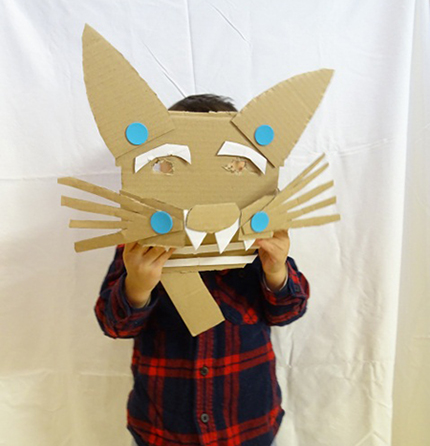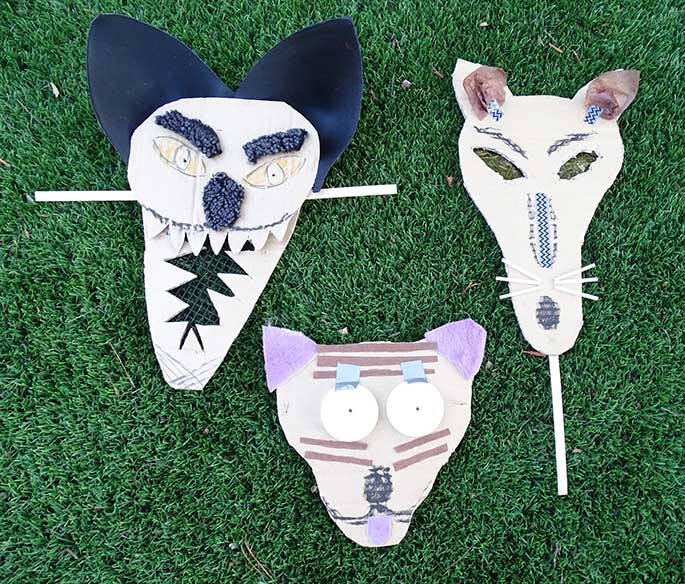Make your own mysterious thylacine mask inspired by the thylacines that are part of the Museum's collection.

Did you know ...
The thylacine, or Tasmanian tiger, had a dog or wolf-like head with short ears and powerful jaws, and a series of dark stripes down its back.
Some early settlers thought thylacines were pests. In 1936 thylacines became extinct.
How to make a thylacine mask
Can you image what thylacines were like? Were they friendly or ferocious? Crazy or calm? Big or small? Imagine the thylacine and make your own mysterious mask.
Skill level: ★ Easy
Time: 30 minutes
What you need:
- cardboard (old boxes are great)
- coloured paper
- crayons, textas or pencils
- elastic or string to tie on the mask, or a stick or ruler to hold up the mask
- string, ribbon or wool to use as fur
- cellophane for the eyes
- straw or string for whiskers
- sticky tape and glue or scissors (remember, these can be sharp, so ask an adult for help).
Steps 1–2
- Gather your materials. What size will you make your mask? Will it cover half or the whole of your face?
- Draw the basic outline of your thylacine mask onto cardboard.
Steps 3–4
- Use scissors (with help if you need it) to cut out your design.
- You might like to add stripes to your mask using paint or textas, or by sticking on pieces of coloured paper. Try cutting out the eyeholes and gluing on cellophane, adding wool, straw or string to create fur and whiskers.
Steps 5–6
- Attach ribbon or elastic to the edges of the mask so you can wear it. Or you could add a stick at the bottom, to hold the mask in front of your face.
- Try on your mask and think about how the thylacine may have seen its environment. What could have been done differently to save this species? What lessons have we learned?
- Why not make a few different animal masks and experiment with the materials you use.

Share your creation
We’d love to see your creation by emailing us a photo to: programs@nma.gov.au